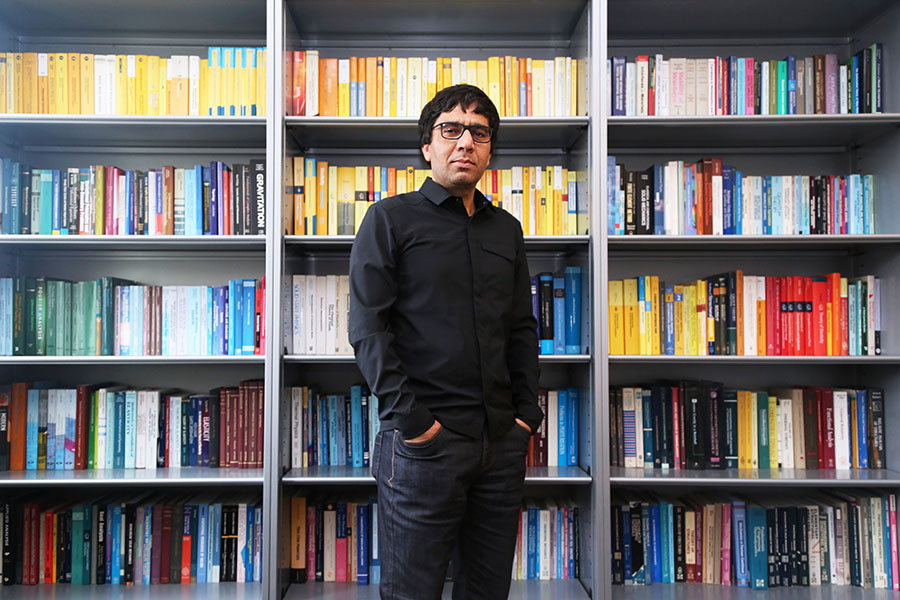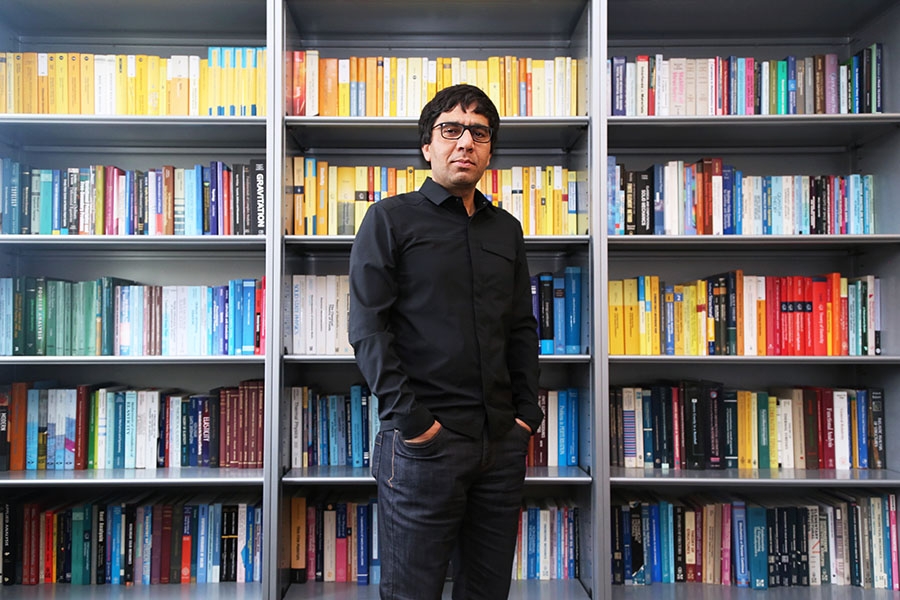 |
| Professor Arash Yavari. Photo Credit: Jess Hunt-Ralston |
In their latest research into the feasibility of cloaking, Professor Arash Yavari and Dr. Ashkan Golgoon, PhD CE 20, found that while it’s not possible to fully protect plates from stress waves, a partial protection—or cloaking— is possible.
“Our conclusion is that you cannot have exact cloaking, but you can have hope for partial cloaking,” Yavari said. “This is a mathematical foundation for the future design of approximate cloaks or shields.”
The paper, “Transformation Cloaking in Elastic Plates,” published in the Journal of Nonlinear Science in January, is the culmination of four years of research backed by the U.S. Army Development Command, known as DEVCOM, Army Research Laboratory.
Yavari and his former student Golgoon, now a post-doctoral researcher at Northwestern University, began this foundational research to find out if the idea of cloaking – giving structures a protection that would render them “untouchable” to stress waves like blasts or earthquakes—is even possible.
The Army Research Lab took an interest in the work because of its potential applications for defense. If the researchers found cloaking to be possible, it could be incredibly useful to protect personnel, vehicles, and sensitive facilities under threat of attack.
“The Army is pursuing a variety of approaches for managing mechanical energy,” said Dr. Dan Cole, program manager, ARL. “Professor Yavari’s result is important because it helps us understand what is scientifically possible and could potentially lead us down new research paths.”
Yavari and Golgoon started their four-year, federally-funded project in 2018 to lay the mathematical foundations for cloaking technology and explore if it’s theoretically possible while still respecting the laws of physics.
In a 2019 study published in the journal Archive for Rational Mechanics and Analysis, the authors concluded that it’s not possible to perfectly steer stress waves in the ground, like those emanating from a blast, around objects like buildings.
Despite casting doubt on dozens of theoretical papers on “elastodynamic cloaking”, Yavari and Golgoon concluded that engineers shouldn’t completely give up on it — just on the idea of an ideal cloak. Limited cloaking could still add a degree of protection to structures, particularly against some stress waves common in earthquakes.
In their most recent paper, Yavari and Golgoon shifted their focus to two-dimensional structures by analyzing the possibility of ideal cloaking in elastic plates.
Their conclusion was again a “no-go theorem”: Exact cloaking isn’t possible, but partial cloaking is and could still be very beneficial.
“It is still very positive because you know what you can expect and what you cannot expect,” Yavari said. “You can’t hide something from an arbitrary wave. But if you know what your service loads are, you could design an approximate cloak.”
Golgoon, who graduated in 2020, earned the School of Civil and Environmental Engineering’s Best Ph.D. Thesis Award for his thesis on this cloaking research, titled "Transformation Elasticity and Anelasticity."
The concept of cloaking is relatively new, with the first research on the topic published about 15 years ago. Yavari was introduced to the research by a distinguished mathematician and mentor, who sent him one of the early papers on elastic cloaking in 2007.
While cloaking fits squarely in the interest of engineers, the delicate mathematics required to formulate it aren’t typically found in the engineering domain.
In his cloaking research, Yavari has used differential geometry, which Albert Einstein famously employed in his theory of general relativity. In the past two decades, it has become more common to see engineers using differential geometry in their work.
In the cloaking problem, one needs to have a clear understanding of the transformation properties of the governing equations of elasticity. “It’s a very, very subtle problem,” Yavari said.
Yavari’s research is heavily mathematical, but it doesn’t make him an outlier among his peers in the School of Civil and Environmental Engineering, where faculty are pushing boundaries through unique interdisciplinary research.
“This is a very diverse department. We have people who do so many different things, and that is a real strength,” Yavari said.

